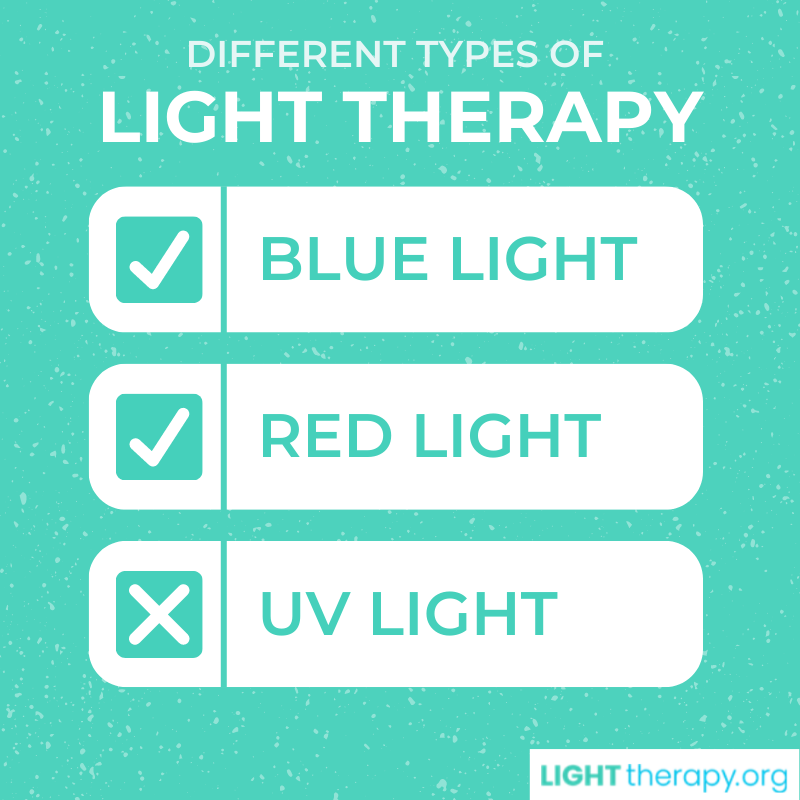Is Light Therapy for Acne Safe?
Contrary to popular belief, acne isn’t exclusive to teenagers. Millions of adults visit dermatologists every year to discuss acne treatment options. In fact, the American Academy of Dermatology believes the number of adults with acne is increasing.
If you’re one of the unlucky adults suffering from persistent pimples, you’ve likely tried many treatment options: cleansers, spot treatments, prescription ointments, medications, etc.
A lesser-known solution that’s gained steam in the dermatology world is light therapy. But is light therapy for acne safe? We answer this question below.
What Is Light Therapy for Acne?
Light therapy is used by dermatologists, estheticians, and skincare clinics to treat a variety of visible and invisible skin conditions, including acne.
Light therapy harnesses different wavelengths of light — blue and red light, most commonly. Each wavelength has a different effect on the skin, particularly when it comes to treating acne.
To better understand how blue light and red light interact with acne, it’s important to know how acne forms in the first place.
How Does Acne Form?
Acne breakouts can occur anywhere on the body where hair follicles exist, which is everywhere except the soles of the feet and palms of the hands.
These hair follicles are attached to sebaceous glands, which produce an oil called sebum. The sebaceous glands secrete sebum into the hair follicles, which then deposit it onto your skin’s surface to add moisture.
With acne, excess sebum combines with dirt and dead skin cells clog the hair follicles (pores), resulting in blackheads and whiteheads. When the common but acne-inducing skin bacteria Propionibacterium acnes enters the mix, the immune system reacts, and an inflamed pimple is sure to appear.
Blue Light for Acne
As we mentioned above, blue and red light are the most common wavelengths used in light therapy.
Blue light is antimicrobial, meaning it destroys bacteria and other pathogens that can harm your skin — an effective defense against both future and existing breakouts.
Blue light also has an anti-inflammatory effect. Inflammation occurs when your immune system reacts to an invasion, such as an invasion of bacteria. Your body sends white blood cells to the area, and a byproduct is swelling and tenderness. Blue light helps to ease these symptoms and prevent further irritation by removing the offending bacteria.
Red Light for Acne
Red light therapy penetrates deeper into the skin than blue light, energizing skin cells and expediting repair. Red light also promotes collagen production, which strengthens the skin.
At the same time, red light reduces inflammation. After a red light therapy treatment session, your acne may look less pronounced. As the swelling decreases, the pain may also subside, giving you some much-needed relief.
In general, you’ll experience the best results by using both red and blue light therapy together. But what about side effects? Is light therapy for acne safe? Let’s see what the experts have to say.

Is Light Therapy for Acne Safe?
Many clinical studies have determined light therapy for acne is safe for all skin types and has virtually no side effects.
Some acne treatment methods are so harsh that patients stop treatment before their skin has time to heal. Light therapy is different. It’s considered virtually risk-free by researchers and skincare specialists, and with very few exceptions, it’s safe for general use.
Of course, it’s always important to consult your regular healthcare provider before starting a new kind of treatment, especially if you have a pre-existing health condition or if you’re taking any prescription medication.
What About Other Forms of Light Therapy?
Now that you know the answer to the question, “Is light therapy for acne safe?” you may be pondering the effectiveness of other light-based treatments, including natural sunlight.
Different from standard red and blue light therapy is UV light therapy. Thanks to countless studies, medical professionals have determined UV light is no longer an acceptable way to treat acne breakouts.
UV (ultraviolet) light therapy produces the same type of light that’s emitted by the sun. It’s well-established that these particular wavelengths of light actually damage your skin. So while a sun-kissed glow may give the illusion of clearer skin, UV light therapy is not a safe long-term solution for persistent acne breakouts.
If you’re interested in light therapy, stick with blue and red light wavelengths. You can receive treatments in a skincare clinic or in the privacy of your own home using portable devices.